Testimonials are a beacon of trust and credibility. They are not just customer reviews; they are stories of experiences, a powerful tool in shaping consumer decisions.
Customer testimonials are a powerful tool that every marketer should have in their arsenal.
In this comprehensive guide, we’ll explore the different types of testimonials – from crafting them effectively to designing impactful testimonial pages.
- What Is a Testimonial?
- Why Customer Testimonials Are So Effective?
- How To Write a Testimonial
- Testimonial Design Best Practices
- 10 Examples of Testimonials
- How to Boost Customer Testimonials
What Is a Testimonial?
A testimonial is a personal endorsement, a vote of confidence from someone who has experienced your product or service firsthand.
From choosing a restaurant for dinner tonight to shopping for a luxury vehicle, people want to know that they are making the right decision before they spend.
When searching for the answer, shoppers almost always turn to other shoppers.
This phenomenon is known as social proof: a psychological mechanism where people tend to follow the actions and behaviors of other people in an attempt to make the “right” choices.
Customer testimonials are the best way to leverage this phenomenon of social proof. You can persuade potential leads to buy your products by showcasing client testimonials.
Why Customer Testimonials Are So Effective?
Customer testimonials work like magic for several compelling reasons, deeply rooted in psychology and consumer behavior. Here are reasons why they are so effective:
Trust and Credibility
In a world flooded with marketing messages, consumers often view testimonials as more genuine and trustworthy than traditional advertising. Hearing or reading about someone else’s positive experience with a product or service reduces doubt and builds credibility.
Social Proof
Psychologically, people tend to do what they see others doing. This concept is known as social proof. Testimonials prove that others have not only purchased your product or service but are satisfied customers, encouraging prospective customers to follow suit.
Relatability and Empathy
Testimonials often include personal stories or specific scenarios in which a product or service has made a difference. This relatability allows potential customers to see themselves in the testimonial, creating an emotional connection and making the product or service more appealing.
Risk Reduction
Purchasing a product or service often comes with perceived risk, especially in online and high-value transactions. Testimonials help mitigate this risk by assuring others who have already made the purchase and are happy with their decision.
Real-World Proof
Unlike theoretical benefits listed in a sales pitch, testimonials offer real-world proof of a product’s or service’s effectiveness. They often include practical examples of how a product has solved a problem or improved someone’s life, which is more convincing than abstract claims.
Variety of Perspectives
Testimonials can offer a range of perspectives and experiences, catering to a diverse customer base. Different testimonials (written, video, or case studies) appeal to different people, making the overall content marketing strategy more inclusive and effective.
Enhanced Engagement
Testimonials are often more engaging than standard marketing copy, especially in video or story format. They can capture attention and maintain interest more effectively, leading to higher engagement rates.
SEO Benefits
From an online marketing perspective, testimonials can improve SEO (Search Engine Optimization). They often include relevant keywords and phrases that potential customers might use in search queries.
Building a Community
Testimonials can contribute to a sense of community around a brand. When customers see others praising a product or service, they feel part of a group of like-minded individuals, which can foster brand loyalty.
Feedback Loop
Testimonials attract new customers and provide valuable feedback for businesses. They can highlight strengths and areas for improvement, guiding future product development and marketing strategies.
In summary, customer testimonials work like magic because they leverage trust, social proof, emotional connection, and real customers evidence to influence consumer behavior, making them a potent tool in any marketing arsenal.
How To Write a Testimonial
Here’s a guide to copywriting a testimonial that’s both impactful and genuine:
1. Be Genuine
- Authenticity is Key: Your testimonial should reflect your experience. Authentic testimonials resonate more with the audience.
- Honest Feedback: Share what you genuinely liked about the product or service. If there were any downsides, it’s okay to mention them, as this adds to the credibility.
2. Be Specific
- Detail Your Experience: Instead of vague statements like “great product,” explain what made it great. Was it the customer service, the efficiency of the product, or something else?
- Highlight Unique Features: Mention specific features or aspects of the service that stood out to you and why they were important.
3. Keep it Concise
- Brevity is Effective: A concise testimonial is more likely to be read and remembered. Aim to deliver your message in a few impactful sentences.
- Focus on Key Points: Stick to the most critical aspects of your experience. Avoid going off on tangents.
4. Personal Touch
- Share Your Story: If the product or service significantly impacted you, share that success story. Did it solve a problem for you? How did it improve your life or work?
- Relatable Scenarios: Mention specific scenarios where the product or service made a tangible difference. This helps potential customers relate to your experience.
5. Clear Endorsement
- Recommend Confidently: If you’re happy with the product or service, clarify it. A straightforward endorsement can be very persuasive.
- Why You Recommend: Briefly state why you would recommend this product or service to others. Is it because of its quality, reliability, or something else?
Example of a Well-Written Testimonial:
“I recently purchased the XYZ software, which has transformed how I manage my business. The user-friendly interface and powerful analytics tools have saved me hours of work each week. What impressed me most was the customer support team, who were always available to help with my queries. I highly recommend XYZ for any small business owner looking for an efficient and reliable management tool.”
The best testimonial is the one that is compelling because it’s genuine, specific, concise, includes the customer’s story, and ends with an explicit endorsement. Remember, a well-crafted testimonial helps others make better choices and strengthens the credibility of the product or service you endorse.
Testimonial Design Best Practices
Brands tend to display their best testimonials on the homepage. But it is also recommended to have a dedicated testimonial landing page.
Creating a testimonial landing page that effectively showcases customer endorsements requires thoughtful design. Here are some best practices to ensure your testimonial page is as impactful as the testimonials themselves:
Layout and Visuals
- Clean and Engaging Design: Opt for an uncluttered and visually appealing layout. A well-organized page helps in drawing attention to the testimonials themselves.
- Visual Hierarchy: Use design elements like font size, color, and spacing to create a hierarchy, making the most important parts (like the testimonial text) stand out.
- Consistent Theme: Ensure the design theme is consistent with the rest of your website for a cohesive user experience.
Use of Multimedia
- Diverse Formats: Incorporate a mix of text, video, and audio testimonials. Testimonial videos can be engaging, showing real people and their emotions.
- Quality Matters: Ensure that all multimedia elements are of high quality. Poor-quality images or videos can detract from the credibility of the testimonials.
- Subtitles and Transcripts: For video and audio testimonials, provide subtitles or transcripts not only for accessibility but also for those who might browse in sound-sensitive environments.
Readability
- Clear Fonts: Choose fonts that are easy to read. Avoid overly stylized fonts that might be difficult to decipher.
- Contrast and Color: Ensure sufficient contrast between the text and the background. Poor contrast can make reading difficult.
- Bite-Sized Chunks: Break up longer testimonials into shorter paragraphs or bullet points for easier consumption.
Branding
- Brand Alignment: The design of your testimonial page should align with your overall brand identity. This includes using your brand’s color scheme, fonts, and tone.
- Consistent Messaging: How testimonials are presented should reflect your brand’s voice and messaging. It should be consistent across the page, whether professional, casual, or playful.
- Brand Imagery: Use elements or imagery that resonate with your brand’s ethos. This could be anything from your logo to specific graphics or icons that are part of your brand’s visual language.
Additional Tips
- Navigation and Accessibility: Ensure the testimonial page is easy to navigate and accessible to all users, including those with disabilities.
- Call to Action: Consider including a call-to-action (CTA) encouraging visitors to learn more about your products or services or to submit their own testimonials.
- Regular Updates: Keep the testimonial page updated with fresh content to show that those who use your product or service are happy customers.
A well-designed testimonial page showcases customer satisfaction and reinforces your brand’s credibility and trustworthiness. By following these best practices, you can create an effective testimonial page that supports your marketing efforts and resonates with your target audience.
10 Examples of Testimonials
The following are the 10 different types of customer testimonials examples that you can use on your website:
- Quotes
- Social Media Posts
- Case Studies
- Video Testimonials
- Interview testimonials
- Influencer Testimonials
- Press Reviews
- Peer Reviews
- Image Testimonials
- Blog Testimonials/Reviews
1. Quotes
Quote testimonials are the most popular form of testimonials. They’re powerful, they’re credible, and, most importantly, they’re effective.
As the name suggests, these are testimonials simply pull a quote directly from a customer.
Here’s an example of using a customer quote from one of OptinMonster’s campaigns:
This example is highly effective for 2 reasons:
- It uses a testimonial with a photo to build credibility
- It’s displayed on a popup campaign
Popups have been proven to increase conversions. Especially when you add custom triggers to the campaign to attract visitors based on their behavior.
In fact, a simple popup with an exit-intent trigger is how Crossrope increased its email list by 900%.
Adding a customer quote only increases your chances of converting your site’s traffic. If you can, add a high-quality image of the customer providing the quote.
This adds extra credibility to your campaign and will boost your conversion rates for signups, pre-orders, revenue, and more!
Want to see more conversions on your site?
2. Social Media Posts
With the popularity of social media, getting customer testimonials is extremely convenient.
All you have to do is pull screenshots from a Facebook post or a Twitter update, and you have instant proof that your customers love your products.
No one questions the authenticity of these screenshot testimonials. Many of these social media posts are public, so if someone wants to check it out for themselves, they can usually do so.
Here’s an example of a very good testimonial pulled from Facebook:
To get social media testimonials like these, keep your customers engaged with your social media accounts by posting regularly yourself, and encourage them to tell you about their experience with your products.
And instead of taking screenshots, you can keep your website automatically updated with social media testimonials using a plugin like Smash Balloon.
With Smash Balloon, you can easily create a feed of tweets that mention your account or use your branded hashtag. Or, you can embed a feed of Facebook reviews on your website.
Here’s an example of a Twitter testimonials feed:
Setting up a feed is super simple, you can design the feed to match your brand, and you can control exactly what content is displayed in your feed.
3. Case Studies
Case studies can also serve as great testimonials when you take small sections of them.
For instance, you could take a full-blown case study and break it down into brief, digestible tidbits. Then, showcase these tidbits on a product page.
You can link back to the full case study so users can conduct a further investigation if they desire.
Here is an example of a case study for one of our customers, DealDoktor:
We used the full case study as a blog post and used just a small quote from it on our Testimonials page. Then we linked back to the full case study.
Here’s what that testimonial looks like:
4. Video Testimonials
Video testimonials have quickly gained popularity in recent years, and it’s become easier than ever to create and publish videos on your website.
The great thing about video testimonials is that they really stand out and make a big impression. There’s just something about seeing a talking head and hearing an actual voice that establishes likability and trust.
Timothy Sykes features his top student front and center in a lengthy video on his “Testimonials” page:
In fact, the entire page is filled with video testimonials.
5. Interview Testimonials
Interviews are especially effective because they help to get more details about the customer experience, painting a vivid picture in the minds of your prospects.
To get a great interview, make sure you ask questions that elicit a story about how and why your customer came to buy your product.
Here are some examples of questions to ask your customer in an interview (suggested by Sean D’Souza):
- What was the obstacle that would have prevented you from buying this product?
- Would you recommend this product? If so, why?
- What did you find as a result of buying this product?
- Is there a specific feature you liked most about this product?
- What would be three other benefits of this product?
- Is there anything you’d like to add?
6. Influencer Testimonials
Influencer testimonials are a powerful form of endorsement, leveraging the credibility and reach of influencers to promote products or services. These testimonials are particularly effective due to the influencer’s established trust and rapport with their audience.
One example is the YouTube sensation from Karachi, Pakistan, Irfan Junejo. Irfan often uploads testimonials as reels, videos, or posts. Brands then repurpose the testimonials in their marketing collaterals.
In the video above, he can be seen talking about the pizza place Famous O’s.
People tend to place a higher value on something when an authority figure approves of it. So if one or more of your customers are well-known or authorities, make sure to feature those people on your website.
These customers could be celebrities, well-known professionals in your industry, or people who have certain qualifications that make them authorities.
On our Testimonials page, we showcase our customers Michael Stelzner, Joost de Valk, Chris Brogan, Neil Patel, and many other high-profile authorities.
If you can’t get an actual testimonial, simply drop the names of your high profile customers.
Or, display the logos of high profile companies you’ve served like Neil Patel does on his “Consulting” page:
7. Press Reviews
Press reviews are persuasive because they come from sources who are professionally qualified to speak on the topic.
For example, new restaurants often try to get reviews from local restaurant critics. Here’s an example from the LA Times:
The key to getting press reviews is making real relationships with the right people.
Press reviews aren’t easy to come by, but when you do land one, it can make your brand popular in an instant!
8. Peer Reviews
Remember what we said about how people are influenced by the behaviors of other people like them? That’s why peer reviews–especially from people who resemble your customer profile–are so powerful.
Yelp is a great place to get peer reviews. You can use a screenshot to place these reviews on your website.
But there are a lot of other review sites and apps besides just Yelp. Here are a few:
- Bazaarvoice – for any kind of product or service
- Goodsnitch – for any kind of product or service
- TripAdvisor – for hotels and restaurants
- Foursquare – for local shops and restaurants
- UrbanSpoon – for restaurants
- Chefs Feed – for restaurants
- Chekplate – for restaurants
- GoodReads – for book reviews
9. Image Testimonials
You may have seen this type of testimonial in the past, and it’s usually limited to healthcare/fitness niches. That said, you can use these if your business has any kind of “Before/After” effect on your customers.
Here’s an example from the skincare company Bioclarity:
This can be one of the most powerful types of customer testimonials. It doesn’t require any commentary from the actual customers.
Instead, the images show the radical transformation your product or services can have.
It’s like they say, “a picture is worth a thousand words.”
10. Blog Testimonials and Reviews
Finally, you might be lucky enough to have customers write blog posts or reviews about your products.
These can be incredibly effective at showcasing your product or services from a neutral point of view. Plus, these are fairly common types of posts.
You’ll see product reviews across most websites, including our own. Here’s an example of an OptinMonster review from the WPForms blog:
These are excellent resources for sharing across social media, using for social proof in your own blog posts, sending to your mailing list, and much more.
The customer testimonial examples shared above can be used in a variety of ways. You can add them to your website, embed them in blog posts, reshare them on social media, and much more.
We highly recommend trying to get each type of customer testimonial and leveraging this social proof to grow your business faster.
Now that we’ve seen customer testimonial examples, let’s quickly look at 3 ways you can increase your testimonials/reviews.
How to Boost Customer Testimonials
1. Leverage Social Proof Notifications
If you’re serious about getting more customer testimonials, then you’ll definitely want to add social proof notifications to your website.
These are small, non-intrusive messages that show your site’s traffic how others are engaging with your brand.
As a result, your site’s visitors get hit with a dose of FOMO (“fear of missing out”), and they’re more likely to take the same actions as others.
That means you can quickly create a notification for when someone leaves a review or testimonial on your site. And this will motivate more of your customers to do the same.
But how do you create customer testimonial notifications if you’re not a professional coder?
The easiest way is with a tool like TrustPulse:
TrustPulse is the BEST social proof software on the market and the easiest way to increase customer testimonials FAST.
That’s because TrustPulse gives you everything you need to create your notifications without requiring any technical skills.
Instead, you can design these notifications to suit your exact needs. That means you can change the image, text, link, and layout of your notification to match your brand’s unique style.
Then you can create a trigger to make the notification display, like when someone leaves you a review on Google My Business or Yelp.
So let’s say you want your site’s traffic to see when someone leaves your business a review on Google.
You create your notification and sync it with your Google My Business account through the TrustPulse Zapier integration.
Then when someone leaves you a review, the following message appears on your website:
When users click on the notification, they’ll be redirected to your Google review. As a result, they’ll be more likely to leave their own customer testimonial on your behalf.
You can even tailor the message to ask customers to leave a review, depending on where they are in their customer journey.
Social proof notifications are one of the easiest ways to get more customer testimonials in less time. And TrustPulse users have been shown to see an instant boost in sales by up to 15%.
Want to see it in action for yourself? Try out TrustPulse today 100% risk-free!
2. Reward Customers for Sharing Their Experiences
Offering a discount, coupon code, or extra product as an incentive to review your business’s products is one of the most effective ways to increase the number of reviews you receive.
Add an incentive at the checkout page to get the most reviews. If you can capture customers at the moment of their purchase, your brand will be fresh on their minds, and excitement for their new product will be high.
This is the perfect time to get them talking about your business through a review.
Or you can send an email thanking customers for their purchase and offering them an exclusive discount or coupon code for writing a review on your company.
This also gives users a chance to test your product before they leave a review, which sometimes might be necessary.
That said, the longer you wait to ask for a customer testimonial, the harder it will be to get users to give you one.
3. Segment Your Emails
Audience segmentation is the process of dividing a larger group into smaller groups (or “segments”) based on their similarities.
It’s a way to organize and categorize your audience, so you can target them more easily and know the types of content that will appeal to each of those groups.
Take this example: You’re a marketing manager for a popular food company, which makes and sells orange-flavored dog biscuits. Your job is to increase the number of sales from your current customer base by getting more online reviews.
First, you want to figure out which online groups of people are most likely to buy your product—let’s call these people your “market segments.”
So how do you go about doing this?
The first thing to do is look at who you already sell to. If the customers who have given a review tend to be older than those who haven’t, you might want to create a segment of your audience who are seniors.
If another segment is more likely to buy products directly from Amazon rather than from your company’s website, there may be a significant opportunity to build sales around that group specifically and drive them back to your business.
There are many ways you can segment your audience, but the most effective method is to figure out which parts of your audience have similarities in demographics and online behavior.
This will help you to determine what content they might respond to and increase your chances of getting more customer testimonials.
Looking for even more ways to increase customer testimonials? We’ve written an ultimate guide on how to ask for a testimonial including 7 tips from industry experts as well as templates.
Remember: testimonials are critical for making sales, so don’t delay. Choose one of the types of testimonials above and implement it on your website today!
And that’s all for today. These have been 10 types of customer testimonial examples, along with 3 concrete strategies for getting more.
We hope you enjoyed this post. If you did, you’ll definitely want to check out the following:
- Best Social Proof Software to Boost Sales
- 9 Ways to Get More Product Reviews and Increase Social Proof
- 5 Reasons You Need to Invest in Case Studies Right Now
These articles will have everything you need to improve social proof on your site so you can start generating higher sales today!
Harnessing the Power of Customer Testimonials with OptinMonster
From showcasing real-life experiences to leveraging the influential power of social proof, testimonials can dramatically transform how potential customers perceive your products or services.
But how do you effectively gather, manage, and display these powerful testimonials? This is where OptinMonster steps in.
OptinMonster isn’t just about creating stunning pop-ups and engaging lead forms; it’s a comprehensive tool that can help you harness the full potential of customer testimonials.
With OptinMonster, you can easily collect testimonials through targeted, well-designed forms and pop-ups.
Imagine capturing customer feedback right at the peak of their satisfaction – OptinMonster makes this a reality. But it doesn’t stop there. You can then strategically display these testimonials on your website, using OptinMonster’s templates and customization options to ensure they align perfectly with your brand and catch your visitors’ attention.
Moreover, OptinMonster’s A/B testing feature lets you see which testimonials resonate most with your audience, helping you refine your approach for maximum impact. And with detailed analytics, you’re always in the know about how your testimonial-driven campaigns are performing.
In a world where consumers are bombarded with choices, let OptinMonster be your partner in standing out.
Start your journey with OptinMonster today and transform your customer testimonials into a powerful driver of trust, engagement, and conversions.

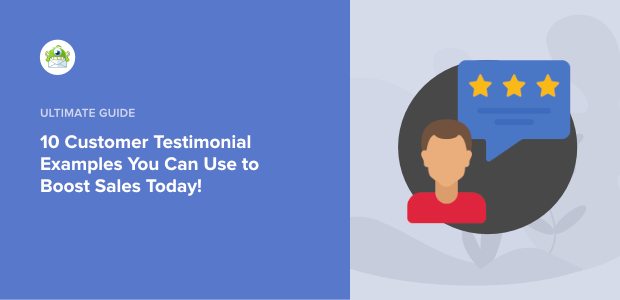
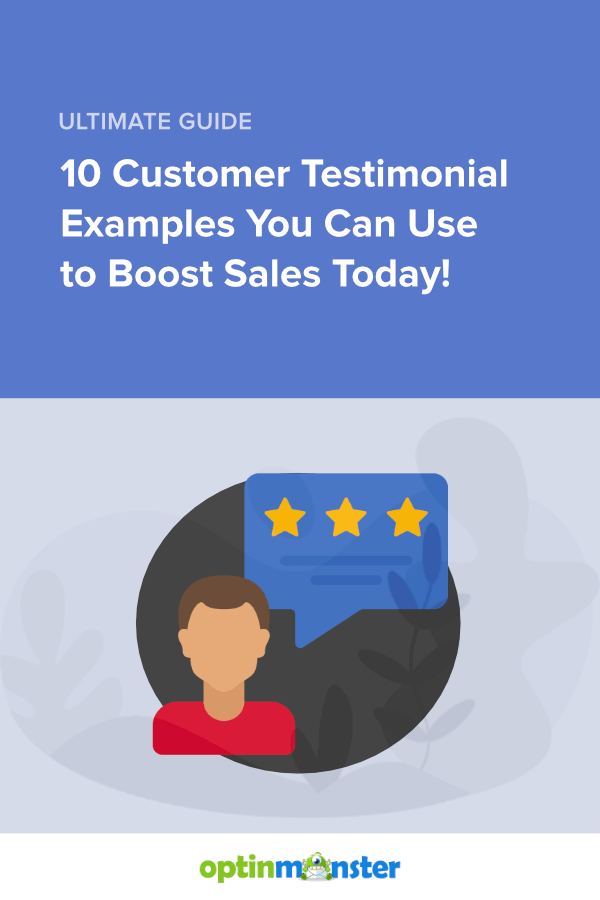
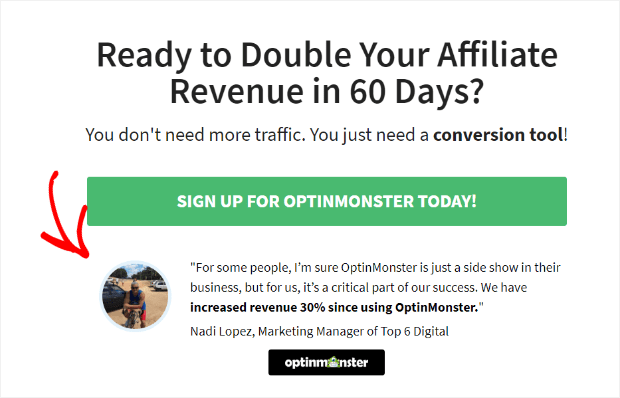
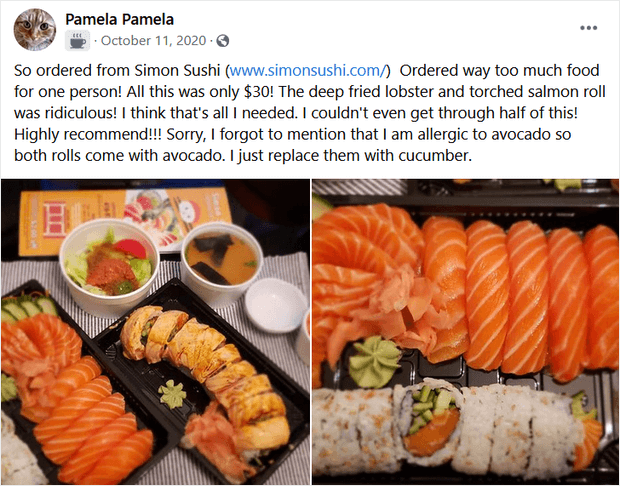
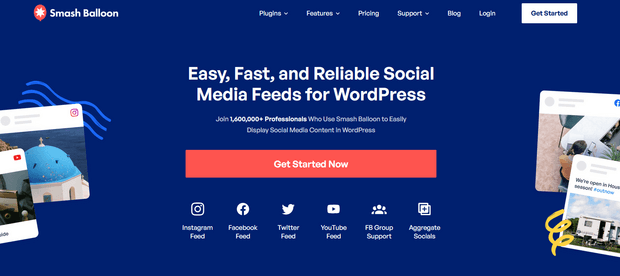
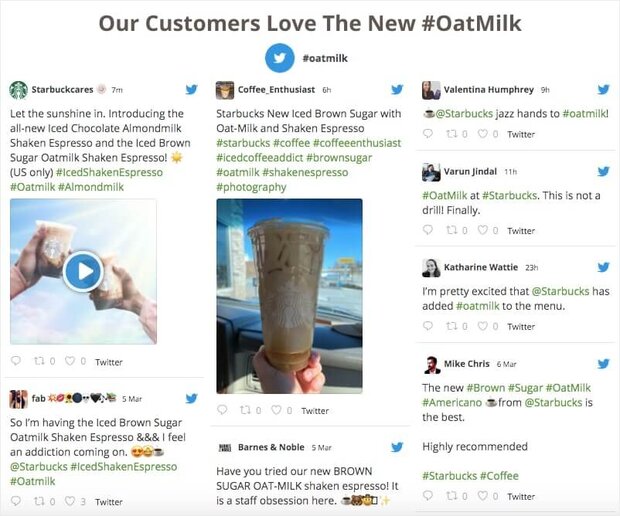



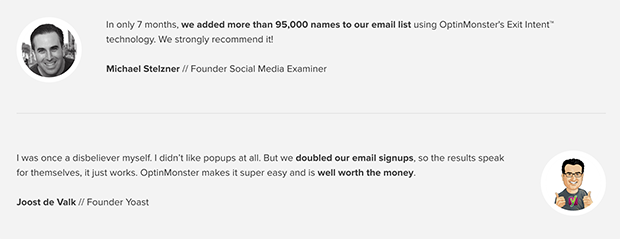
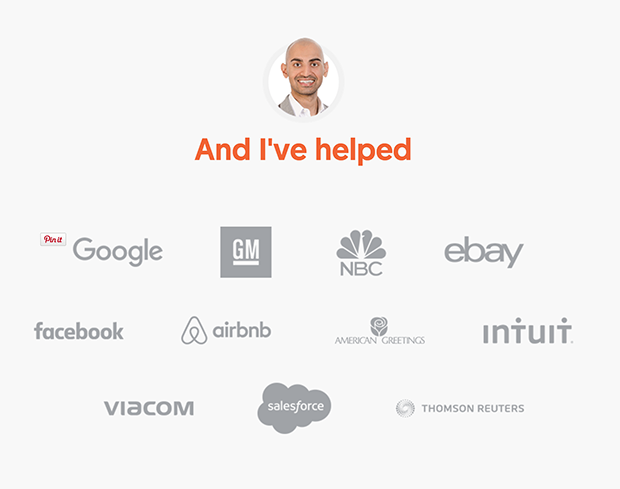


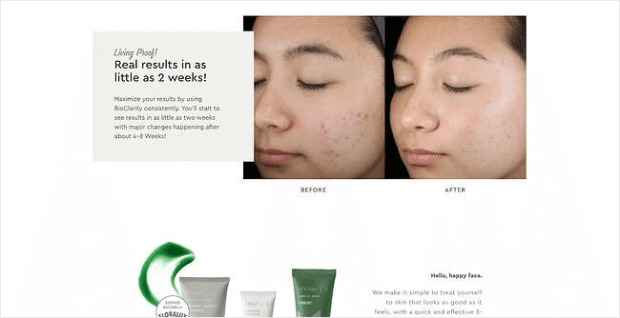
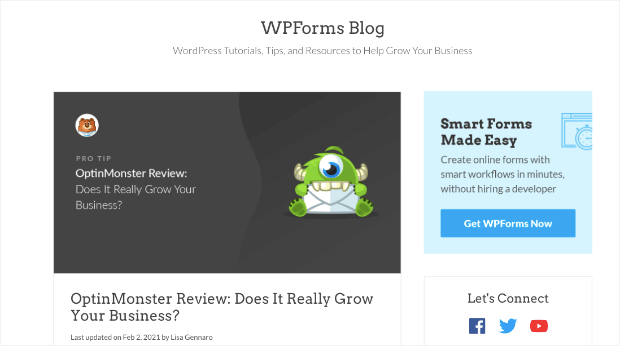
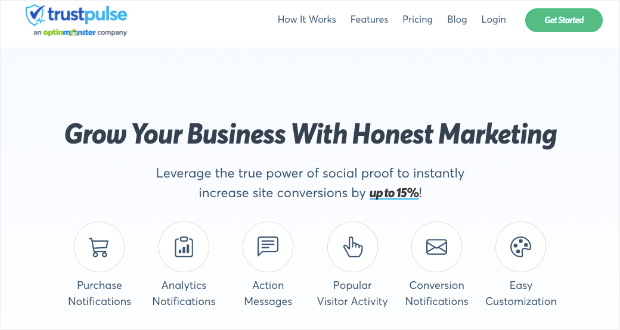
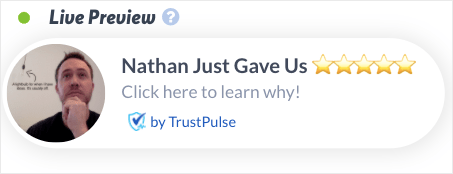









Add a Comment